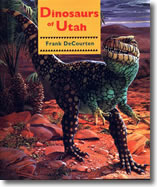Lectures 1999
January 29In the Path of a Killer Volcano
by Captain Chip Johnson, USN (Retired)
As Commanding Officer of the Navy Oceanography and Meteorology Facility in the Philippines in 1991, Chip Johnson was approached by a geologist from the USGS with a warning that a small nearby volcano was showing signs of activity and could pose a threat to the huge U.S. Air Force and Navy bases located around the Philippine mountain. Little did anyone realize that within sixty days from this unofficial contact from USGS that the area would be subject to a volcanic eruption that was ten times larger than that of Mt. St. Helens.
Learn how these communities rapidly assessed the dangers involved and prepared themselves for what was to become the largest volcanic eruption of this century. View dramatic video of the dangers volcanoes present, the violent eruption of Mt. Pinatubo, the overwhelming destruction and severe disruption to the lives of more than 20,000 U.S. military members and their families. While this eruption was 12,000 miles from central California, there are volcanoes in the western United States with the same potential to threaten large metropolitan areas. Under certain conditions central California could experience some direct effects if these erupted.
Chip Johnson now teaches earth sciences at Sierra College.
January 30Sandhill Cranes Tour
 Each winter millions of waterfowl venture southward into the Sacramento and San Joaquin Valleys and thus avoid the harsh northern winters. Among long-distance migrants is the Sandhill Crane, a tall and regal bird which moves in flocks of hundreds to thousands. Join Sierra College ornithologist Brian Williams on a tour of local wetlands, including Stone Lakes National Wildlife Refuge, Cosumnes River Preserve and the Woodbridge Ecological Area. This tour will focus upon the ecology of wetlands, the identification of waterfowl and the biology and ecology of the Sandhill Crane. We will follow them throughout the day, including their evening roosting sites behind locked gates at a preserve.
Each winter millions of waterfowl venture southward into the Sacramento and San Joaquin Valleys and thus avoid the harsh northern winters. Among long-distance migrants is the Sandhill Crane, a tall and regal bird which moves in flocks of hundreds to thousands. Join Sierra College ornithologist Brian Williams on a tour of local wetlands, including Stone Lakes National Wildlife Refuge, Cosumnes River Preserve and the Woodbridge Ecological Area. This tour will focus upon the ecology of wetlands, the identification of waterfowl and the biology and ecology of the Sandhill Crane. We will follow them throughout the day, including their evening roosting sites behind locked gates at a preserve.
Dinosaur Supersites: Exploring Mesozoic Mass Murders
by Frank DeCourten
For more than 150 years, paleontologists have been excavating dinosaur bones from the Rocky Mountain region. Occasionally, scientists have found the remains of hundreds of dinosaurs preserved in close proximity to each other. What could have caused such dramatic accumulations of dinosaur bones? What catastrophic events led to the simultaneous death of whole herds of dinosaurs? 
This illustrated lecture will focus on the nature of such dinosaur "supersites" by examining the Cleveland-Lloyd Quarry and Dinosaur National Monument in Utah. These two dinosaur supersites have produced more than 25,000 fossils from the late Jurassic Morrison Formation, one of the richest fossil-bearing rock sequences in the world. Each site tells a unique story of mass mortality and fossil preservation that reveals the fascinating origins of such "fossil graveyards."
Frank DeCourten teaches geology and paleontology at Sierra College and is author of the recently published Dinosaurs of Utah.
March 19Birds and Other Wildlife of Africa
by Dick Hilton
 When his parents moved to Johannesburg, South Africa, Dick Hilton, then only 18 years old, had no choice but to move there with them. While only staying for a few months he was inspired by the wildlife and the beauty of the landscapes that he saw. It was then that he began a lifelong appreciation for this incredible continent. As a naturalist-guide for numerous American companies he has led groups back to Africa several times with trips visiting Kenya, Tanzania, South Africa, Botswana and Zimbabwe. For Hilton, who specialized in vertebrate paleontology, going to Africa is like returning to the Pleistocene North America—the Ice Age, when lions, mammoths, camels and zebra roamed freely here. The difference is that all of the plants, animals and birds are alive, not fossilized.
When his parents moved to Johannesburg, South Africa, Dick Hilton, then only 18 years old, had no choice but to move there with them. While only staying for a few months he was inspired by the wildlife and the beauty of the landscapes that he saw. It was then that he began a lifelong appreciation for this incredible continent. As a naturalist-guide for numerous American companies he has led groups back to Africa several times with trips visiting Kenya, Tanzania, South Africa, Botswana and Zimbabwe. For Hilton, who specialized in vertebrate paleontology, going to Africa is like returning to the Pleistocene North America—the Ice Age, when lions, mammoths, camels and zebra roamed freely here. The difference is that all of the plants, animals and birds are alive, not fossilized.
Hilton is struck by the fact that if you went to Africa and only saw the birds, the trip would be singularly spectacular—so, unlike most slide lectures of Africa, he will concentrate on the phenomenal array of birds and let the mammals take a back seat. He and his wife Kristin returned from a trip this summer that concentrated on the Okavango Delta region of Botswana—one of the richest areas from bird life in the world. Dick Hilton is Chairman of the Natural History Museum and teaches geology and paleontology at Sierra College.
April 16Brazil's Pantanal: The Water Continent
by Coke Smith
At a time when American's are spending countless hours and millions of dollars attempting to restore the nation's precious wetlands, the Pantanal lives on as one of the world's last great blocks of wilderness. This enormous matrix of wetlands, forests and uplands occupies an area of Brazil and Paraguay that is nearly as large as California! Borne by floodwaters of numerous rivers, waters from the upper Paraguay River Basin converge to create more than 200,000 square kilometers of rich wetland seasonal ecosystems. Freshwater bays, saline ponds, sloughs, booklets (small perennial watercourses) and dense subtropical forests join mountains. So much water collects here that the legendary Xaraes Ocean is essentially reborn on an annual basis.
Well known as one of the richest and most biologically diverse natural regions on earth, the Pantanal boasts 650 species of birds, 230 fishes, 80 mammals and 50 reptiles. From forests to rivers to bays, the beauty of the region is simply unsurpassed. This slide-illustrated presentation will exhibit vegetation and wildlife and will provide the audience with ecological information as well as modern issues facing this unique region.
April 23John Muir Among the Animals: Stickeen and Other Stories
by Lee Stetson as John Muir
 The icy storm of a little dog named Stickeen is perhaps the most popular and most loved of John Muir's many adventures. This "funny, black, short-legged, bunchy-bodied, toy-dog", as he described Stickeen, gave Muir valuable insights into our kinship with all of the creatures humans share this good planet with—our "fellow mortals". Among other stories in this amazing collection of animal tales, Muir chases a Yosemite bear, confronts coiled rattlesnakes, mourns the loss of the passenger pigeon, and tells of his hilarious encounters with sheep in the Yosemite high country.
The icy storm of a little dog named Stickeen is perhaps the most popular and most loved of John Muir's many adventures. This "funny, black, short-legged, bunchy-bodied, toy-dog", as he described Stickeen, gave Muir valuable insights into our kinship with all of the creatures humans share this good planet with—our "fellow mortals". Among other stories in this amazing collection of animal tales, Muir chases a Yosemite bear, confronts coiled rattlesnakes, mourns the loss of the passenger pigeon, and tells of his hilarious encounters with sheep in the Yosemite high country.
Returning for his sixth performance at Sierra College, professional actor Lee Stetson conducts his one-man play, guaranteed to spell-bind every man, woman and child in the audience. Mr. Stetson has performed various works that he has written on the life of John Muir throughout the United States, in Europe and in Japan.
May 14Sierra Nevada Bighorn Sheep: On the Verge of Extinction?
by John Wehausen
"The bravest of all the Sierra mountaineers" is how the great naturalist John Muir referred to the Sierra Nevada bighorn sheep. Despite legislative protection since 1878, these very symbols of wildness in California's high Sierra are in serious danger of extinction. Plagued by diseases transmitted by domestic sheep and overhunting, these majestic mountain mammals began disappearing as early as the 1870s. Genetically distinct from California's desert bighorns, the unique Sierra Nevada bighorns roamed some of the most remote and austere regions of the high Sierra—at one time from Sonora Pass southward to Mineral King in Sequoia National Park. Down to perhaps only 100 individuals today, Sierra Nevada bighorns are rarer than the Florida Panther—making them clearly one of the most endangered mammals of North America.
John Wehausen began his research with Sierra Nevada bighorns in 1974, twenty-five years ago and is California's expert on this vanishing species. He is Research Scientist with the White Mountain Research Station and President of the Sierra Nevada Bighorn Sheep foundation. His slide-illustrated lecture will discuss the history and current status of this great animal, as well as management dilemmas and frustrations with recovery efforts.
September 24Golden Trout in the High Sierra
by Randy Smith
The Golden Trout is California's state freshwater fish. However, the taxonomy (classification) of this beautiful native has been disputed since their first description in 1892. What was the status of the Golden trout when European man first arrived? Were they a single discrete species? Several subspecies?
As with many other California endemic (restricted) organisms the problem has been confounded by the introduction of non-endemic species. This has resulted in the hybridization between the golden trout and the rainbow trout. Are there still pure populations of golden trout left after these fish introductions? If so, where are they? If they still exist, are they discrete species? Several subspecies? Biochemical and morphological evidence were examined by Dr. Smith in an attempt to answer these questions.
October 24Human Population, Habitat and Biodiversity
Mike Sellors, Director, Population and Habitat Program, Audubon Society
Along with a beautiful publication, the northern California regional Audubon Society is working to promote sustainable human populations. Mike Sellors will describe the effects and manifestations of large populations on wildlife and habitat in California and the United States.
November 19Humans and Mountain Lions in California
Steve Torres, California Department of Fish and Game
Once hunted with impunity, the mountain lion has become an important issue for California’s wildlife managers. Considered predators of domestic livestock and worrisome to cities and public, mountain lion populations have fluctuated greatly, dwindling to relatively low numbers—causing concern for their own survival. In 1990, California’s Prop 117 protected the mountain lion as a “specially protected mammal”. Steve Torres will discuss the ramifications of this law as well as the real status of the mountain lion in California.
December 10Mapping the High Sierra
James Moore, US Geological Survey
The highest Sierra was one of the last parts of the U.S. to be explored, and it was only during the Civil War that the first scientific party attempted a reconnaissance map of the region. What they discovered included the highest mountain then in the U.S., Mt. Whitney—among lots more. James Moore is Senior research Geologist Emeritus with the U.S. Geological Survey in Menlo Park, CA. He will discuss his book Exploring the Highest Sierra, just published by Stanford University Press.
